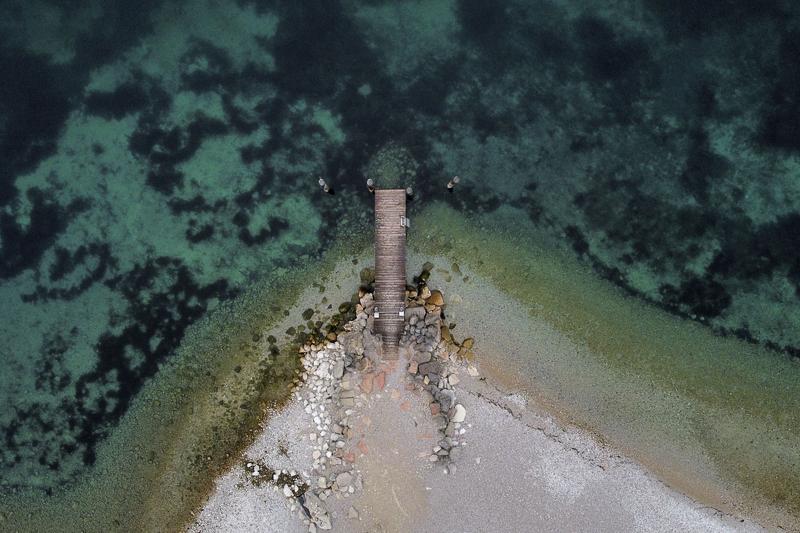 The shallow water is seen next to a boat dock at lake Garda near Malcesine, northern Italy Nov 1, 2022. Weeks of dry winter weather have raised concerns that Italy could face another drought. (PHOTO / AP)
The shallow water is seen next to a boat dock at lake Garda near Malcesine, northern Italy Nov 1, 2022. Weeks of dry winter weather have raised concerns that Italy could face another drought. (PHOTO / AP)
MILAN – Weeks of dry winter weather have raised concerns that Italy could face another drought after last summer's emergency, with the Alps having received less than half of their normal snowfall, according to scientists and environmental groups.
The warning comes as Venice, where flooding is normally the primary concern, faces unusually low tides that are making it impossible for gondolas, water taxis and ambulances to navigate some of its famous canals.
The problems in Venice are being blamed on a combination of factors – the lack of rain, a high pressure system, a full moon and sea currents
The problems in Venice are being blamed on a combination of factors – the lack of rain, a high pressure system, a full moon and sea currents.
Italian rivers and lakes are suffering from severe lack of water, the Legambiente environmental group said on Monday, with attention focused on the north of the country.
ALSO READ: Extreme weather events in Europe sound alarm on climate change
The Po, Italy's longest river which runs from the Alps in the northwest to the Adriatic has 61% less water than normal at this time of year, it added in a statement.
Last July Italy declared a state of emergency for areas surrounding the Po, which accounts for roughly a third of the country's agricultural production and suffered its worst drought for 70 years.
"We are in a water deficit situation that has been building up since the winter of 2020-2021," climate expert Massimiliano Pasqui from Italian scientific research institute CNR was quoted as saying by daily Corriere della Sera.
"We need to recover 500 millimeters in the north-western regions: we need 50 days of rain," he added.
READ MORE: N. Kenya faces hunger crisis as drought wipes out livestock
Water levels on Lake Garda in northern Italy have fallen to record lows, making it possible to reach the small island of San Biagio on the lake via an exposed pathway.
An anticyclone has been dominating the weather in western Europe for 15 days, bringing mild temperatures more normally seen in late spring.
Latest weather forecasts do however signal the arrival of much-needed precipitation and snow in the Alps in coming days.


